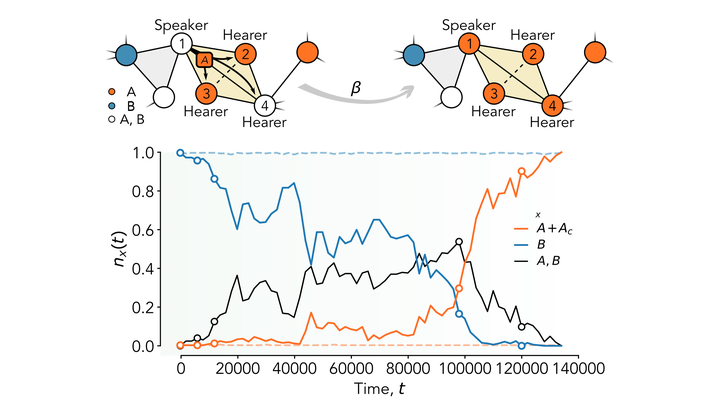
Abstract
How can minorities of individuals overturn social conventions? The theory of critical mass states that when a committed minority reaches a critical size, a cascade of behavioural changes can occur, overturning apparently stable social norms. Evidence comes from theoretical and empirical studies in which minorities of very different sizes, including extremely small ones, manage to bring a system to its tipping point. Here, we explore this diversity of scenarios by introducing group interactions as a crucial element of realism into a model for social convention. We find that the critical mass necessary to trigger behaviour change can be very small if individuals have a limited propensity to change their views. Moreover, the ability of the committed minority to overturn existing norms depends in a complex way on the group size. Our findings reconcile the different sizes of critical mass found in previous investigations and unveil the critical role of groups in such processes. This further highlights the importance of the emerging field of higher-order networks, beyond pairwise interactions.